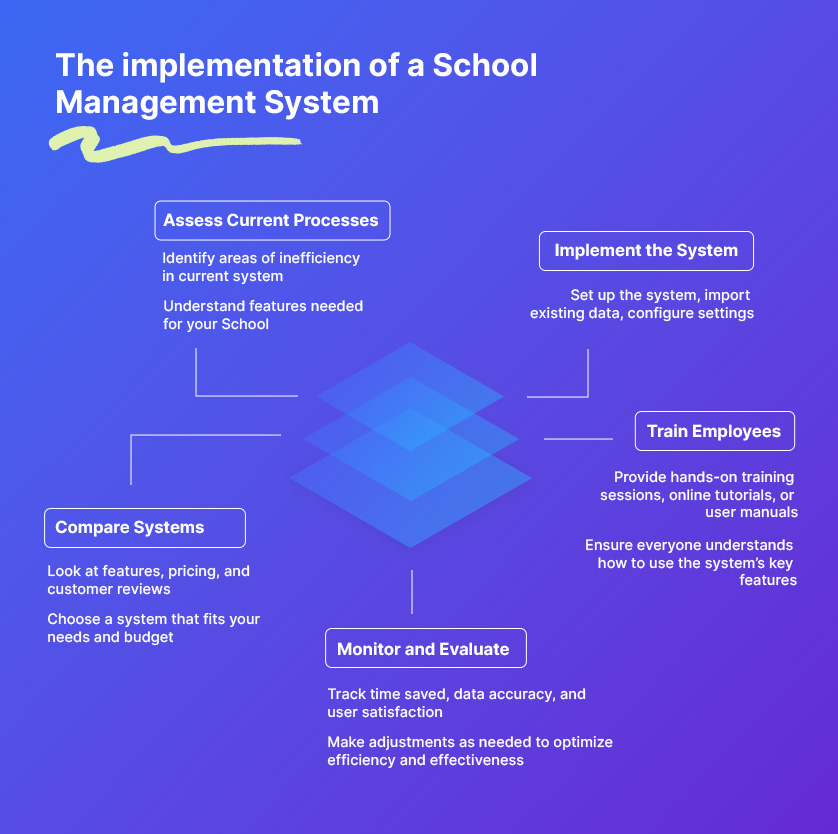Introduction
In today’s fast-paced world, managing administrative tasks can be a daunting challenge for any organization. From scheduling appointments to tracking expenses, there are countless responsibilities that can easily become overwhelming without the right tools in place. This is where a School Management System can make all the difference. By streamlining processes and automating routine tasks, a management system can help schools and educational institutions operate more efficiently and effectively.
Benefits of Using a School Management System
Streamlined Administrative Tasks: A School Management System automates administrative tasks such as student enrollment, attendance tracking, and scheduling. This reduces paperwork and manual record-keeping, making the administrative process more efficient.
Improved Parent-Teacher Communication: The system can provide a platform for direct communication between parents and teachers. This can help parents stay updated about their child’s academic progress, attendance, and school activities.
Data Management: It provides a centralized system for managing student data, including grades, health records, and disciplinary records. This makes it easier for the school staff to access and update information as needed.
Financial Management: The system can also handle various financial tasks such as fee collection, payroll management, and budgeting. This can help the school manage its finances more effectively.
Resource Management: It can help in managing school resources more effectively, including textbooks, equipment, and other learning materials.
Security: Many School Management Systems come with features like GPS tracking of school buses, biometric attendance systems, and CCTV integration, enhancing the security of students.
E-Learning Capabilities: Some systems also offer e-learning capabilities, allowing teachers to share assignments and tests online, and students to learn at their own pace.
Transparency: It increases transparency in the educational process, as parents can monitor their child’s progress and participate more actively in their education.
Environmentally Friendly: By reducing the need for paper and physical resources, a School Management System is also more environmentally friendly.
Key Features to Look for in a School Management System
When choosing a School Management System, it is important to look for certain key features that will make your life easier:
User-friendly interface: A user-friendly interface is crucial for any software, especially for a School Management System. This means the system should be easy to navigate and use, even for those who are not tech-savvy. It should have clear menus, simple navigation, and intuitive design. This will ensure that all users, including teachers, administrators, and parents, can easily access and use the system’s features.
Customizable workflows and task assignments: Every school has its own unique needs and workflows. Therefore, the ability to customize workflows and tasks according to your school’s needs is crucial. This could include customizing the grading system, attendance tracking, or communication methods. The system should allow you to create and assign tasks to specific users or groups, and track their progress. This level of customization can help streamline processes and increase efficiency.
Integration with other tools and platforms: In today’s digital age, schools use a variety of tools and platforms for different purposes, such as communication, collaboration, and content creation. Therefore, it’s important that the School Management System can integrate with these tools. This could include integration with email platforms for communication, learning management systems for online learning, and accounting software for financial management. This will ensure a seamless flow of data between different systems, reducing manual data entry and the risk of errors.
Remember, the best School Management System is the one that fits your school’s specific needs and workflows. It’s always a good idea to do thorough research and consider multiple options before making a decision.

How to Implement a School Management System in Your Organization
Assess your current administrative processes: Before implementing a new system, it’s important to understand your current processes and identify areas where you are spending too much time or resources. This could include tasks like student registration, attendance tracking, grading, and communication. By identifying these areas, you can better understand what features you need in a School Management System.
Compare features, pricing, and customer reviews: Once you have a clear understanding of your needs, start researching different School Management Systems. Look for a system that offers the features you need at a price that fits your budget. Don’t forget to read customer reviews to get a sense of the system’s reliability and customer service.
Choose the Right System: After comparing different systems, choose the one that best fits your needs and budget. Consider factors like ease of use, customization options, and integration with other tools you use.
Implement the System: Once you’ve chosen a system, start the implementation process. This may involve setting up the system, importing existing data, and configuring settings to match your school’s workflows.
Train employees on how to use the system effectively: It’s crucial that everyone who will be using the system is properly trained. This could involve hands-on training sessions, online tutorials, or user manuals. Make sure everyone understands how to use the system’s key features.
Monitor and evaluate the system’s performance regularly: After the system is implemented, it’s important to monitor its performance and make adjustments as needed. This could involve tracking how much time is saved, the accuracy of data, and user satisfaction. Regular evaluation will help you ensure the system is meeting your needs and optimize its efficiency and effectiveness.
Remember, implementing a new School Management System is a significant task that requires careful planning and execution. But with the right approach, it can greatly improve the efficiency and effectiveness of your school’s administration.
Conclusion
A School Management System is a valuable tool for any educational institution looking to simplify administrative tasks and improve overall efficiency. By streamlining processes, enhancing communication, and providing valuable insights through reporting and analytics, a management system can help schools operate more effectively and focus on what truly matters – providing quality education to students. We encourage all readers to consider implementing a School Management System in their own organizations to experience the benefits firsthand.
